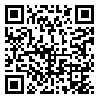BibTeX | RIS | EndNote | Medlars | ProCite | Reference Manager | RefWorks
Send citation to:
URL: http://hnmj.gums.ac.ir/article-1-579-en.html

 1, Atefeh Ghanbari Khanghah
1, Atefeh Ghanbari Khanghah 
 , Kobra Salamikohan
, Kobra Salamikohan 
 , Ehsan Kazemnezhad Leili
, Ehsan Kazemnezhad Leili 
 , Nastaran Norouzi Pareshkouh
, Nastaran Norouzi Pareshkouh 

Prioritization of general clinical competence indicators from nurses’ view
employed in emergency wards
By: Hasandoost F1, Ghanbari Khanghah A2*, Salamikohan K3,
Kazemnezhad Leili E4, Norouzi Pareshkouh N5
1- Department of Nursing(Medical-surgical), Instructor, School of Nursing and Midwifery, Gazvin University of Medical Sciences, Gazvin, Iran
2- Department of Nursing(Medical-surgical), Associate professor, Social Determinants of Health Research Center (SDHRC), School of Nursing and Midwifery, Guilan University of Medical Sciences, Rasht, Iran
3- Department of Nursing, Instructor, School of Nursing and Midwifery, Guilan University of Medical Sciences, Rasht, Iran
4- Bio-statistics, Associate professor, Social Determinants of Health Research Center (SDHRC), School of Nursing and Midwifery, Guilan University of Medical Sciences, Rasht, Iran
5- Department of Nursing(Community Heath), Instructor, Fateme Zahra School of Nursing and Midwifery of Ramsar, Babol University of Medical Sciences, Ramsar, Iran
Received: 2013/12/24
Accepted:2014/02/24
Abstract
چمقدمه : نحوه ارتباط والدین با فرزندان با سبک فرزندپروری آنان ارتباط دارد.سبکهای فرزندپروری نقش مهمی در شکل گیری شخصیت بهنجار و نابهنجار در کودکان داشته و در صورت بکار گیری سبکهای ناکارآمد در تربیت کودکان می تواند منجر به پیامدهای منفی متعددی از جمله مشکلات رفتاری در آنان گردد.Introduction: Nursing as a clinical discipline is developing daily in emergency wards and health care system managers should assess and prioritize clinical competence indicators in these wards continuously. Lack of clear clinical competence indicators challenges evaluation.
Objective: This study aimed to determine general clinical competence indicators from nurses’ viewpoint working in emergency wards.
Methods: This is a assessment study using Delphi method in three phases: the first phase (determine the General Clinical competence indicators), Phase II (classifying general clinical competence indicators by members of the expert panel) third phase (prioritizing general clinical competence indicators using exploratory factor analysis) through which 710 nurses were chosen by convenience random sampling working in emergency wards affiliated to Guilan Therapeutic Educational Centers during a two month period. Finally, exploratory factor analysis was used.
Rیافته ها: نتایج نشان داد که سبک فرزندپروری مقتدرانه هم با نمره کل مشکلات رفتاری درونی سازی (003/RResults: In prioritizing phase of general clinical competence indicators, five factors statements were classified by the expert panel and provided a structured model in three domains which were divided as communication (10 items), disaster and emergency management (8 items) and personality characteristics (12 items).
Conclusion: A present alternative to reduce the gap between theory and practice in nursing is through determination and prioritization of clinical competence criteria in emergency wards. Factor analysis can be used to prioritize these indicators. Further research in health care system is ed in order to achieve reliable and valid instrument.
Keywords: Clinical Competence, Nursing Staff, Hospital, Emergency Service, Hospital
*Corresponding Author: Atefe Ghanbari Khanghah, Rasht, School of Nursing and Midwifery
Email: at_ghanbari@gums.ac.ir
Received: 2015/12/1 | Accepted: 2015/12/1 | Published: 2015/12/1
| Rights and permissions | |
 | This work is licensed under a Creative Commons Attribution-NonCommercial 4.0 International License. |

